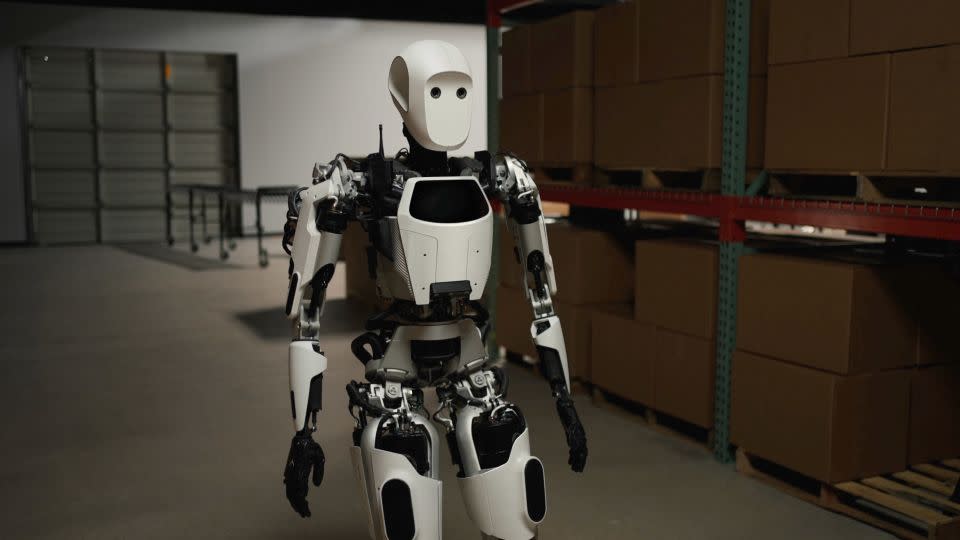India rolls out its first rover on the lunar surface after historic landing
- Oops!Something went wrong.Please try again later.
Editor’s note: A version of this story appeared in CNN’s Wonder Theory science newsletter. To get it in your inbox, sign up for free here.
We live in a time where new missions of exploration set off to the cosmos on a regular basis.
But just because rocket launches have become more common doesn’t make it any less exciting to see a spacecraft lift off to the heavens.
On Saturday, NASA launched its most internationally diverse crew yet. The SpaceX Crew Dragon Endurance capsule carried four astronauts from the United States, Russia, Japan and Denmark to the International Space Station, where they will live and work about 227 nautical miles above Earth for 190 days.
The Japan Aerospace Exploration Agency is expected this weekend to launch a high-precision lunar lander dubbed the “Moon Sniper,” as well as XRISM, or the X-Ray Imaging and Spectroscopy Mission, to study some of the most extreme celestial objects.
And earlier this week, one country made history with a moon shot that captured the attention of the world.
Lunar update

India successfully landed its uncrewed Chandrayaan-3 spacecraft on the moon Wednesday. The historic occasion marked the country as a global space power and only the fourth nation to achieve a lunar landing.
The robotic explorer touched down closer to the lunar south pole than any other previous mission has ventured, and it’s a region many space agencies are eager to explore due to its potential resources.
Chandrayaan-3 has already returned several images and rolled out its Pragyan rover on the lunar surface.
Meanwhile, Russia’s Luna 25 lander crashed into the moon, causing experts to question the country’s future lunar ambitions.
We are family
Portraits often depict Bonnie Prince Charlie, who led the unsuccessful Jacobite rebellion in the 1700s, as a heroic and dashing figure.
But a new recreation based on a death mask, or a cast taken of his face after he died, reveals a more down-to-earth side of the 18th century British royal.
Researchers used the mask, along with 3D models, to show him as a young man of 24 with curly hair, wide eyes and a bit of acne.
“I wanted to portray him as a normal, regular person because he was 24 years old and he was a person who had hobbies and liked to do different things,” said Barbora Veselá, a graduate student in forensic art and facial imaging at the University of Dundee in the United Kingdom.
Explorations

Humans handle a lot of messy, tedious tasks that can be considered hazardous, both on Earth and in space.
But a new humanoid robot design called Apollo, unveiled this week by robotics startup Apptronik, could one day do household chores and even help build habitats on the moon and Mars.
About the size of the average human, Apollo is capable of walking, picking up objects and placing them. Initially designed to improve logistics in warehouse settings, the robot could play a role one day in NASA’s Artemis program, according to the Apptronik team.
We visited Apptronik in Austin, Texas, to see Apollo in action and learn how it could further cosmic exploration.
Other worlds
Astronomers have spied a large dark spot in Neptune’s atmosphere that represents a massive swirling storm.
It’s the first time one of these vortex-like spots has been detected using an Earth-based telescope.
There’s an air of mystery around the storms and why they form on Neptune. The new images also revealed a bright spot next to the storm that may be a first-of-its-kind feature on the blue ice giant.
Additionally, an international team of scientists think they know why Neptune’s ghostly ice clouds have largely disappeared, and it has something to do with the sun’s increasing activity.
Consequences

As the world warms due to the climate crisis, Antarctica’s iconic emperor penguins may begin to disappear.
Emperor penguins rely on the steady presence of sea ice for nesting and raising their chicks. When the ice breaks and melts earlier than expected, the chicks can drown, drift away or starve.
New research showed that multiple colonies of the marine birds saw none of their chicks survive in 2022 as global warming caused vital sea ice to vanish.
Meanwhile, increasing temperatures are making it difficult for some trees in tropical forests to photosynthesize. Beyond a certain threshold, warming could cause widespread loss of carbon-storing trees and affect the global climate in the future.
Discoveries
Check out these riveting reads:
— A rare baby giraffe was born without its signature spots at a zoo in Tennessee, and the calf might be the only patchless giraffe currently living on the planet.
— The Solar Orbiter captured cutting-edge images of tiny jets of material escaping into space from the sun’s south pole.
— Researchers explored a thriving octopus garden in the ocean’s midnight zone off Monterey, California, and they now believe they know why the cephalopods cluster there in the thousands.
Like what you’ve read? Oh, but there’s more. Sign up here to receive in your inbox the next edition of Wonder Theory, brought to you by CNN Space and Science writers Ashley Strickland and Katie Hunt. They find wonder in planets beyond our solar system and discoveries from the ancient world.
For more CNN news and newsletters create an account at CNN.com

